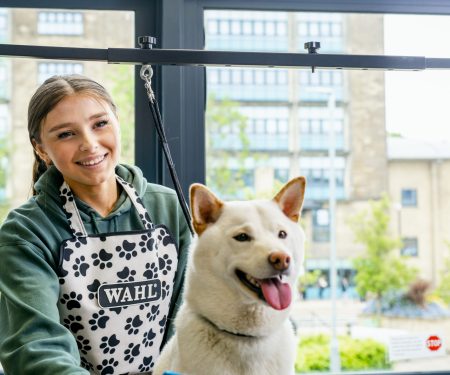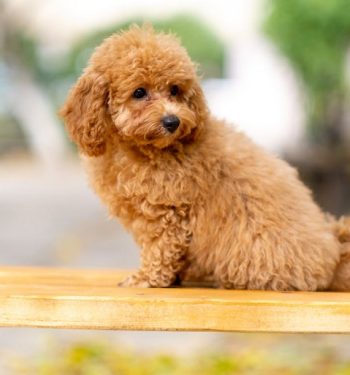These are the top breeds of dogs that need the most grooming
Dog grooming is the umbrella term for the practice of regular maintenance and hygiene of dogs. A common misconception is that dog grooming is just fur work, however, it can include ear cleaning, nail trimmings, teeth cleaning and more.
At Calderdale College, we want to make caring for your dog easier and more affordable, so later this year we will be launching a range of new courses so that you can take care of your pooch for free at home or start your own business!
Most dogs require some level of grooming, but there are some dogs that require more than most! Here are some of the top breeds that require the most grooming…
Old English Sheepdog
In at the top of the list is the Old English Sheepdog! The fluffy, thick fur on this breed is notorious for its tendency to matt, tangle and form dreads. They have a double coat which requires above average maintenance. To keep fur healthy, they need to be brushed frequently to prevent a dirty or matted coat. Sheepdogs have an undercoat, which will shed once a year. Maintenance may need to be upped during those periods.

Poodle
Poodles are known for their thick, curly and soft coat and for being hypoallergenic. They require regular trims and haircuts to prevent matting and dreads from forming. Also, their thick fur can block their line of sight as it gets longer and longer. Most Poodles require a trim every four to six weeks.
Hungarian Puli
Hungarian Puli also have thick, corded dreadlocks. Like the poodle, regular care and maintenance need to be done to prevent excessive matting or dirty fur. Unlike the Poodle, the Puli’s dreads will move out of their view as they move, so you don’t need to worry about their sight. Puli coats require lots of attention and the grooming methods are quite specific due to the natural cords their fur creates.
Afghan Hound
Afghan Hounds have silky, thick, and fine fur that require at least two brushings every week. The most important thing when it comes to grooming Afghan hounds is brushing. Regular brushing and grooming prevent unwanted tangles, dreads, and knots. It is highly recommended that they are bathed weekly. Similar to human hair, their fur needs to be shampooed and conditioned thoroughly.

Bichon Frisé
This small, fluffy, soft breed is hypoallergenic and requires regular trimming and brushing to prevent matt, tangles, and eyesight blocking. They have a double-layered coat to help regulate their temperature. It’s recommended to groom them every four to six weeks and to do regular brushing at home to maintain good fur health in between grooming sessions.
Are you up for the challenge of grooming your dog safely at home? From September, we’re offering an Introduction to Dog Grooming course aimed at adult students who want to begin a career in dog care or want to expand their skills for personal use. This dog grooming and salon management course focuses on the principles and practises of modern dog grooming techniques and will take you on a journey from beginner-level, to being able to confidently style several dog breeds.
We will also be delivering courses in Canine Health and Behaviour and Canine Emergency First Aid so you can top up your dog grooming skills with the other essential canine needs. You will also develop an understanding of health and safety and canine emergency first aid, which are all necessary when working in a dog grooming salon or carrying out dog grooming at home.
To find out more about these courses and our Animal Care curriculum, click here.






